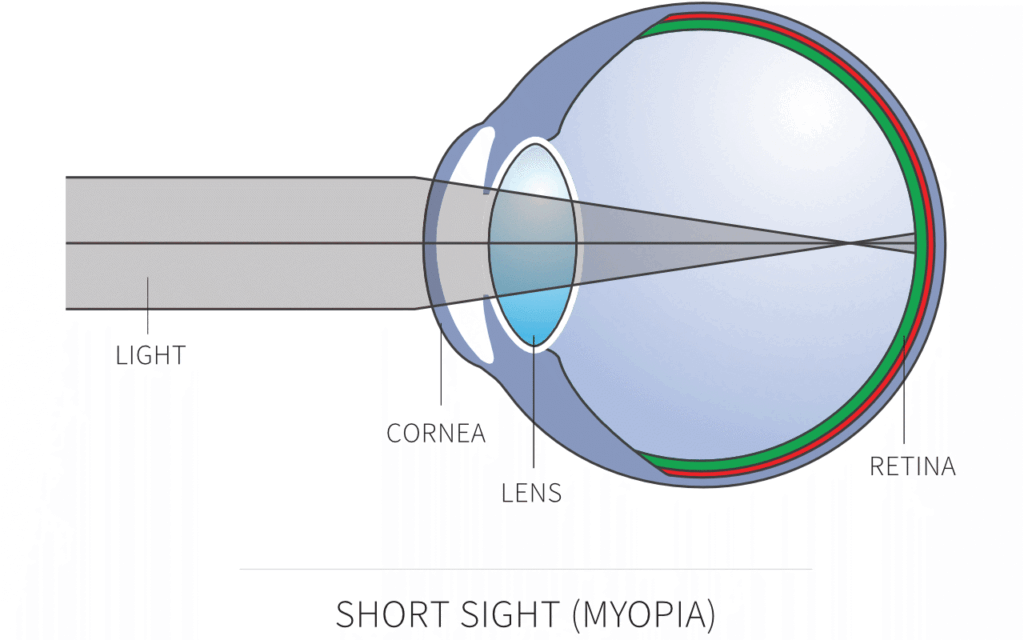Short Sightedness
“The only thing worse than being blind is having sight but no vision.” Helen Keller
About

Short sightedness is a common eye condition that causes distant objects to be blurred, while close objects can be seen clearly with no blur.
The Causes of Short Sightedness

Excessive Eye Strain
When you are watching a bright television screen, the eye gets longer, which prevents the eye from bending light the usual way.

Excessive Close-Vision Work
Similar to excessive eye strain, working on a device close to your eyes can cause elongated eyes, which does not allow the eye to bend light the way it usually does.

Excessive Time Spent Indoors
Because indoor light has a lot of contrast in the red-green area of the spectrum, it can trick the cells into thinking that the eye is focusing when it isn't. This leads the cells to instruct the retina to keep growing.
The Problem of Short Sightedness

Short-sightedness usually occurs when the eyes grow slightly too long. This means that light doesn’t focus on the light-sensitive tissue (retina) at the back of the eye properly. Instead, the light rays focus just in front of the retina, resulting in distant objects appearing blurred.

Intraocular Lens Surgery
Intraocular lenses (IOLs) are permanent, artificial lenses that can replace the eye’s natural lens to restore both near and distant vision. The most common use for IOLs is in cataract surgery, to replace the diseased lens.

Lasik Surgery
LASIK or Lasik, commonly referred to as laser eye surgery or laser vision correction, is a type of refractive surgery for the correction of short sightedness, since it is in the cornea.

Wearing Glasses
When you wear glasses, the lenses bend light rays slightly outwards to counteract the over-focusing tendency. As a result, the light rays focus further back in the eye on the retina

